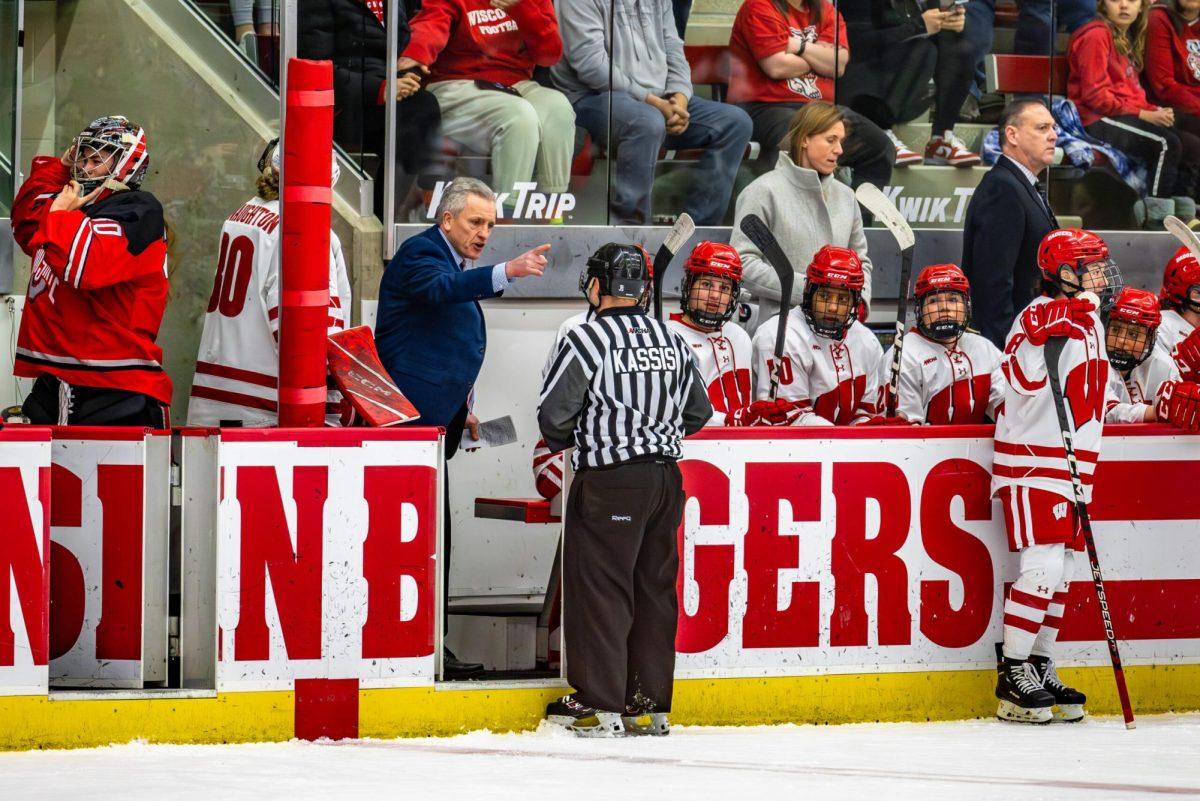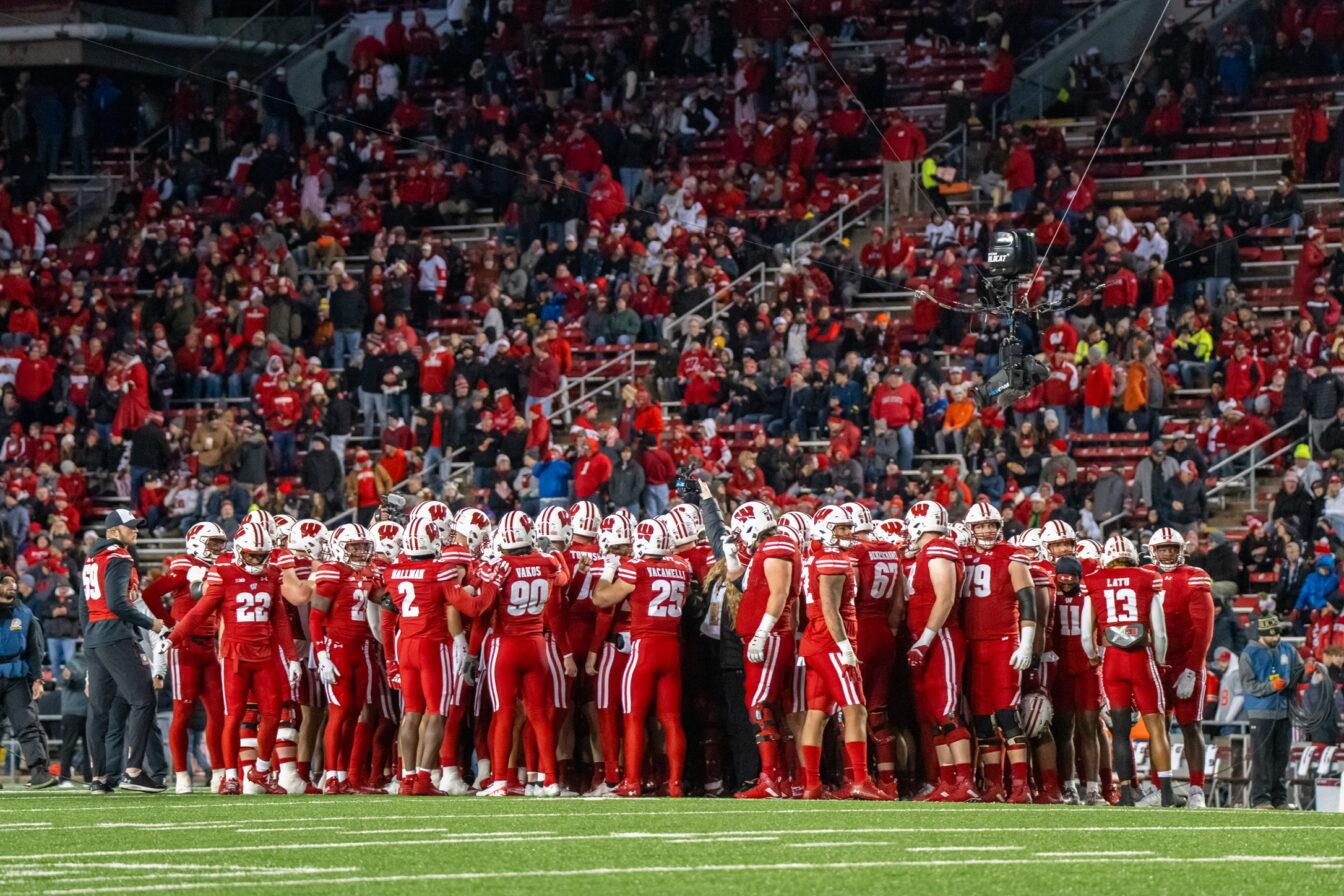From a conference that was struggling to find its place in the top 10 of the national rankings two and three seasons ago, 2002 saw the Big Ten firmly entrench itself back at the top. Ohio State came away with the national title while the conference marked an overall 5-2 record in bowl games. By season’s end the Buckeyes, Wolverines and Hawkeyes all found themselves in the top 10, while much of the conference’s second tier achieved upset victories in bowl games.
With a bevy of returnees across the board the Big Ten may find itself as the premier conference in college football. That is, unless they don’t beat each other up too much. With a strengthened field and the recent woes of Ohio State tailback Maurice Clarett, the Buckeyes may have their work cut out for them if they want to run the table for a second-straight season.
Michigan, Wisconsin and Purdue look to be improved with experience, while the second stage of the conference has enough playmakers to keep things interesting. The Boilermakers return a league-best 19 starters, and with a heady coach in Joe Tiller, they could easily take the conference. Even a team like Minnesota, with a favorable schedule and a talented offense, could play the spoiler.
We at The Badger Herald have tried to sort out the race for you. Here are our picks.
Ohio State
It’s hard to discount any defending National Championship team. It’s even harder to discount a team that returns all 11 starters on offense and six from a stellar defense. Superstar Maurice Clarett’s suspension is a genuine concern, but the Buckeyes have experience and a knack for pulling out close games. Chris Gamble is the complete package and possibly the greatest sheer athletic talent in college football. Losing Mike Doss, Donnie Nickey and Matt Wilhelm hurts, but the defense should mature by the time the conference season begins. By combining the clutch abilities of Mike Nugent, the best kicker in the country, and a proven leader like Craig Krenzel, the offense should have enough to overcome any defensive deficiencies.
Penn State
Zack Mills may not have Craig Kenzel’s championship ring, but he has the raw talent to be the best QB in the Big Ten. A threat to run, as well as a savvy touch passer, Mills loses the luxury of having a running back like Larry Johnson and an experienced offensive line, so the load may be on the junior’s shoulders. Gino Capone, Derek Wake and Deryck Toles are an extremely quick set of linebackers, while senior Rich Gardner is one of the finest corners in the nation. There’s a strong nucleus in Happy Valley and a 76-year old Joe Paterno leading them. You can take that for what it’s worth, but “Joe Pa” still has the passion and knowledge to put a bowl-caliber team on the field in 2003.
Michigan State
Bobby Williams is gone, but the shadow of a disappointing season marred with controversy hangs over John L. Smith. Smith has succeeded rebuilding in stints with Utah State and most recently with Louisville, but the Spartans will undergo a complete overhaul in philosophy and execution that will need a learning period that may last all season. Offensively, the Spartans get some help with the reinstatement of QB Jeff Smoker, but the loss of Charles Rogers and a defense that doesn’t look to improve much from a team that gave up 398 points last season is reason for worry. There is some optimism with a talented offensive nucleus, but don’t bank on seeing the Spartans on New Year’s.
Minnesota
If Minnesota is going to be the sleeper team of 2003, it will be on the strength of its explosive offense. Leading the way is versatile quarterback Asad Abdul-Khaliq, a threat to run or pass (2190 yards in 2002). He will be joined in the backfield by a trio of talented running backs: sophomore Marion Barber III, junior Terry Jackson, and senior Thomas Tapeh. All three should see significant playing time. 6-foot-5 senior Aaron Hosack leads the Gopher receiving corps, but Abdul-Khaliq’s biggest weapon is senior tight end Ben Utecht. Up front, Minnesota must replace both starting offensive tackles.
There will be plenty of familiar faces on defense, as 10 starters return. Leading the way is senior linebacker Ben West (103 tackles in 2002). A big concern for Glen Mason will be special teams, where the Golden Gophers will start a new punter and kicker. And, as usual, Minnesota opens with a light schedule, facing the likes of Troy State and Louisiana-Lafayette.
Iowa
It seems as though every year the Hawkeyes are overlooked in Big Ten projections. This year is no different. Now that Brad Banks’ days in Iowa City are over, the offensive load will fall squarely on the shoulders of 5-foot-8 tailback Fred Russell. In 2002, Russell became the 10th player in school history to cross the 1,000-yard mark in a season (1264). Quarterbacking duties will be handed over to 6-foot-7, 250-pound senior Nathan Chandler. Luckily for Chandler, giant left tackle Robert Gallery (6-foot-7, 320) is back for his senior year. Gallery is the exception, as head coach Kirk Ferentz will have seven new starters on offense, including four new offensive linemen.
The defense returns seven starters from a year ago, including strong safety Bob Saunders (102 tackles). Special teams will be a strength once again, as the Hawkeyes return 2002 Lou Groza Award winner Nate Kaeding, as well as punter David Bradley.
Michigan
The Wolverines return seven of their 11 starters on the offensive side of the ball, including their three most productive skill position players (QB John Navarre, RB Chris Perry and WR Braylon Edwards). While Navarre has had his ups and downs, with the return of Edwards and another tough Michigan offensive line, he appears to be ready to have a breakout season after a solid junior campaign. A greater area of concern for the Wolverines will be the effectiveness of their defense to keep opposing teams out of the end zone. Michigan will need to replace five starters, including All-American linebacker Victor Hobson, who led the team in both sacks and tackles last season. The Wolverines’ schedule, however, sets up well. They don’t play Penn State or Wisconsin, and their all-important matchup with the Buckeyes will be played in Ann Arbor.
Northwestern
Following the Wildcats’ 2000 campaign, things seemed to be looking up in Evanston. Head coach Randy Walker had just guided NU to an 8-4 record and a share of the Big Ten title, and with a solid nucleus returning the Wildcats were preseason favorites to repeat as conference champs. Much to the chagrin of the NU faithful, however, the optimism surrounding the Wildcats would soon fade. Beginning with the death of safety Rashidi Wheeler during an offseason conditioning drill, things began to go south for Northwestern. Over the past two seasons, NU has compiled an overall record of 7-16 and has won just three conference games. Despite a few flashes of greatness on the offensive side of the ball, the Cats have just been unable to put enough points on the board to keep them in games. Last year NU allowed a whopping 41.1 points a game, which ranked 113th among 117 teams in the nation. So, barring a miraculous turnaround, on the defensive end in particular, victories will likely come few and far between for the beleaguered Wildcats this season.
Indiana
Like the Spartans and Wildcats, 2003 will likely be another trying year for the Hoosiers. Last season, IU came up with just one conference victory under first-year head coach Gerry DiNardo (32-29 over Wisconsin), and had major issues not only the defensive side of the ball but the offensive side as well. On the bright side, Indiana does return all of its running backs from last season, most notably junior Yamar Washington. Also, the Hoosiers return their most explosive offensive threat in wideout Courtney Roby, whose 86.6 receiving yards per game ranked third in the Big Ten last season. However, Roby’s effectiveness and the team’s general level of success will fall largely on quarterback Matt LoVecchio’s shoulders. LoVecchio, a senior transfer from Notre Dame, will be fighting for every yard (and possibly his coach’s job) throughout the season.
Wisconsin
Wisconsin enters the 2003 season with one big question: can senior quarterback Jim Sorgi play consistently enough to lead the team to victories? If Sorgi is benched due to injury or lack of production, the Badgers will be forced to play a quarterback with next to no experience. A deep receiving core, including the return of All-American Lee Evans, should help Sorgi greatly throughout the year, and the presence of Anthony Davis in the backfield produces a strong running threat for the Badgers. With 19 returning starters, including nine on defense, Wisconsin should have the maturity and skill to elevate itself to the upper tier of the conference. All-American Jim Leonhard’s move to free safety and the immergence of redshirt freshman Joe Stellmacher should help the Badgers improve defensively. Special-teams play is still a question for Wisconsin, although place kicker Mike Allen appears to be kicking with confidence again.
Purdue
Last season, the Boilermakers became just the 13th team in Big Ten history to lead the conference in total offense and total defense in the same season. The problem was that these statistics didn’t translate into victories. Junior Kyle Orton will be the signal caller this season, although sophomore Brandon Kirsch could see significant playing time if Orton struggles. Whoever is the quarterback, he will be throwing to last year’s top two Big Ten receivers last year in Taylor Stubblefield (77 catches for 769 yards) and John Standeford (75 catches for 1,307 yards). Highlighted by three senior starters at linebacker, the Purdue defense will be more experienced and talented than last season’s.
With five of their first six games at home, the Boilermakers will be looking to get off to a fast start. However, their schedule includes six bowl teams from last season and ends with four out of six games on the road.
Illinois
Illinois will be looking to avoid a poor start this season after losing five of its first six games in 2002. The return of senior quarterback Jon Beutjer will be the team’s only stability on offense as the Illini lost four key wide receivers, a sound running back and their best offensive tackle. Production at the running-back position will be a key if the Illini are going to get out of the Big Ten cellar. Freshman Ibrahim Halsey and junior Morris Virgil will be in stiff competition for the position early in the season. On the defensive side of the ball, Illinois will be counting on junior middle linebacker Matt Sinclair to help anchor a defense which ranked third-worst in stopping the pass last season. With just 14 returning starters, Illinois looks to rebound this season after seeing a drastic fall in production from its 2001 Big Ten Championship team.













